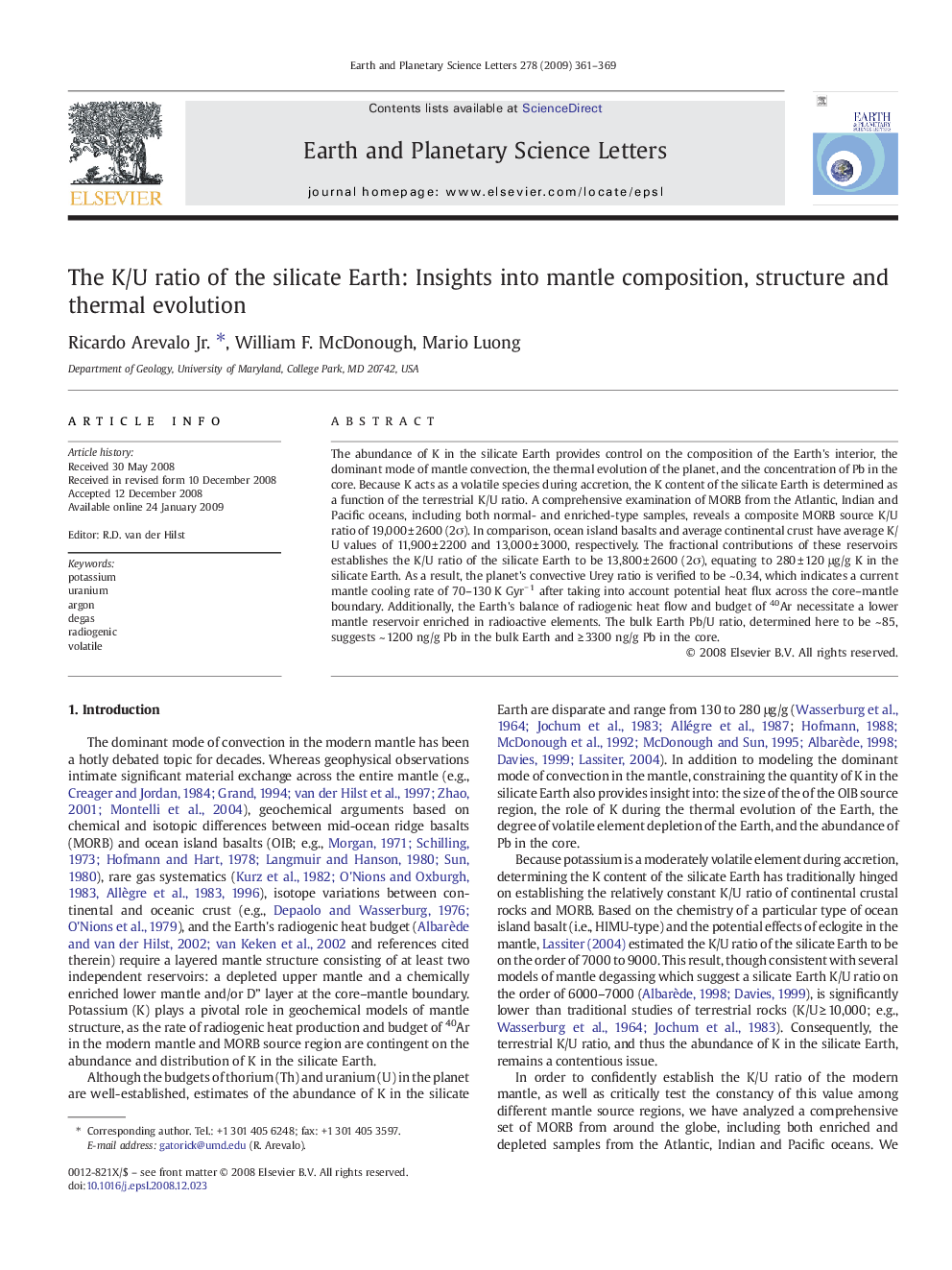| کد مقاله | کد نشریه | سال انتشار | مقاله انگلیسی | نسخه تمام متن |
|---|---|---|---|---|
| 4679335 | 1634879 | 2009 | 9 صفحه PDF | دانلود رایگان |

The abundance of K in the silicate Earth provides control on the composition of the Earth's interior, the dominant mode of mantle convection, the thermal evolution of the planet, and the concentration of Pb in the core. Because K acts as a volatile species during accretion, the K content of the silicate Earth is determined as a function of the terrestrial K/U ratio. A comprehensive examination of MORB from the Atlantic, Indian and Pacific oceans, including both normal- and enriched-type samples, reveals a composite MORB source K/U ratio of 19,000 ± 2600 (2σ). In comparison, ocean island basalts and average continental crust have average K/U values of 11,900 ± 2200 and 13,000 ± 3000, respectively. The fractional contributions of these reservoirs establishes the K/U ratio of the silicate Earth to be 13,800 ± 2600 (2σ), equating to 280 ± 120 μg/g K in the silicate Earth. As a result, the planet's convective Urey ratio is verified to be ~ 0.34, which indicates a current mantle cooling rate of 70–130 K Gyr− 1 after taking into account potential heat flux across the core–mantle boundary. Additionally, the Earth's balance of radiogenic heat flow and budget of 40Ar necessitate a lower mantle reservoir enriched in radioactive elements. The bulk Earth Pb/U ratio, determined here to be ~ 85, suggests ~ 1200 ng/g Pb in the bulk Earth and ≥ 3300 ng/g Pb in the core.
Journal: Earth and Planetary Science Letters - Volume 278, Issues 3–4, 25 February 2009, Pages 361–369